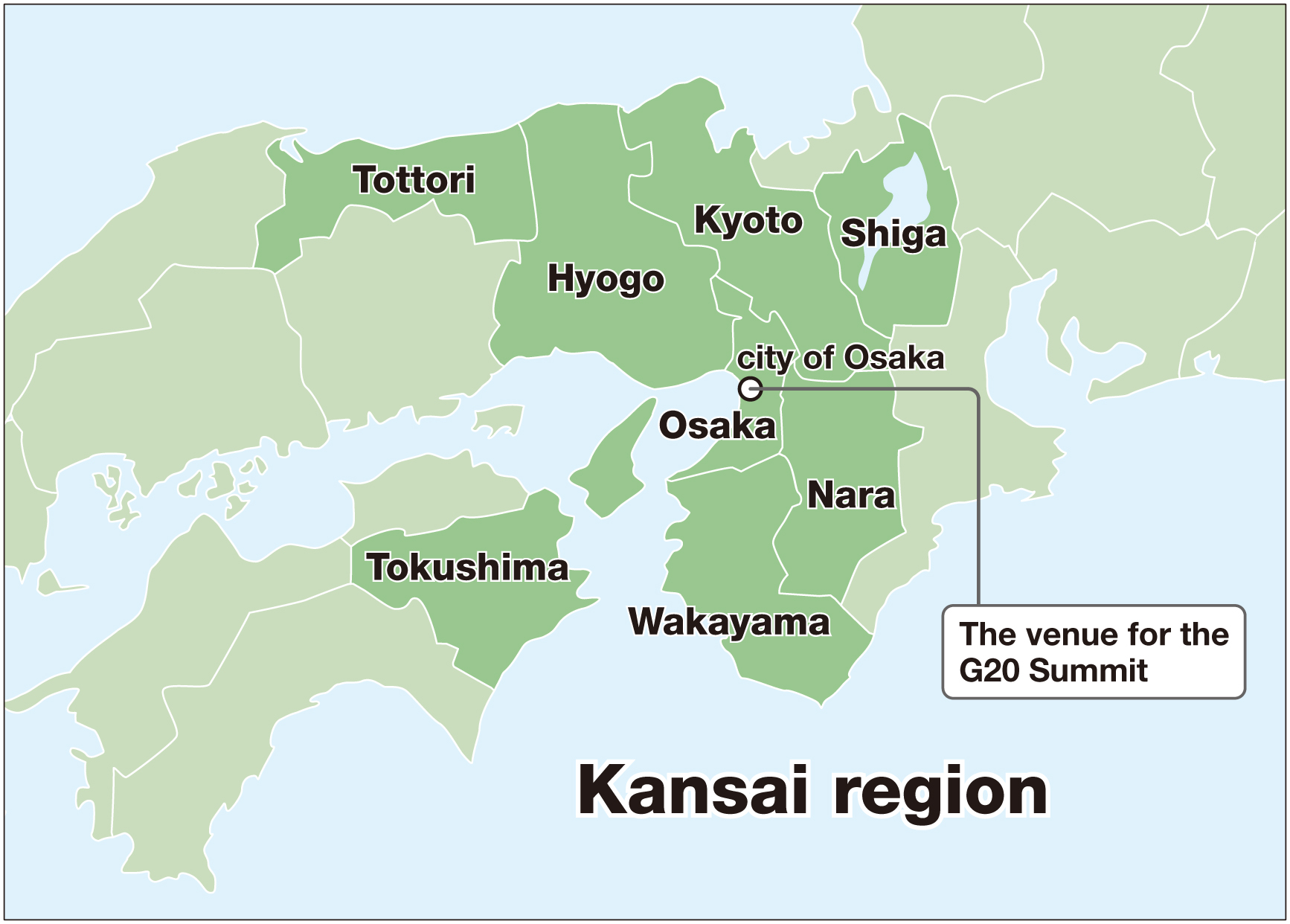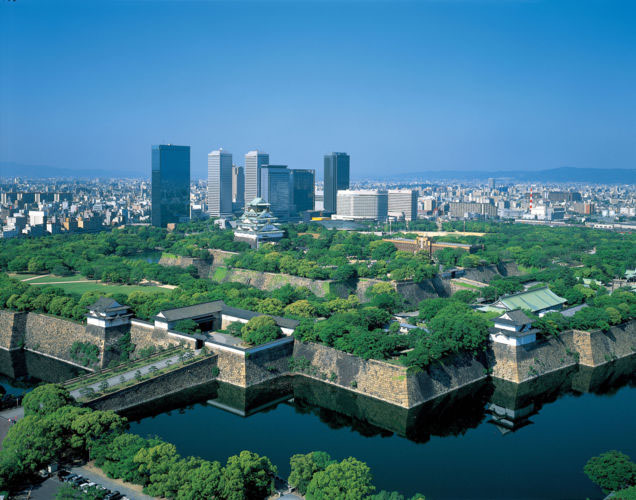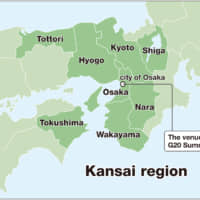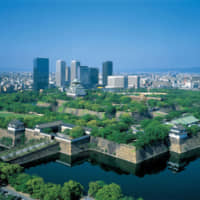Boasting flourishing industries and a plethora of sights steeped in rich history, the Kansai region has long been a political, cultural and commercial center of Japan.
Located in the western part of Japan, Kansai consists of eight prefectures — Osaka, Kyoto, Nara, Wakayama, Hyogo, Shiga, Tokushima and Tottori — as defined by the Union of Kansai Governments, and is easily accessible from Tokyo via shinkansen; the journey from Tokyo Station to Shin-Osaka Station takes around two-and-a-half hours. Additionally, travelers can access various destinations throughout the region from Kansai International Airport in Osaka where this year’s G20 Summit will be held on June 28 and 29.
The beginnings of Japanese civilization can be traced back to Kansai. Emperor Nintoku’s tomb, one of the largest in the world, was built in Osaka in the fifth century, and in early Japan, Naniwa-zu port in the city of Osaka served as a point of contact with foreign envoys.
Nara became Japan’s first permanent capital in 710, and from 794, Kyoto reigned as the nation’s capital for over a thousand years. During this time, the region produced countless cultural treasures that became part of the bedrock of traditional Japanese culture.
During the Edo Period (1603-1868), Osaka developed as the commercial center of Japan, earning the nickname “tenka no daidokoro” (“the nation’s kitchen”). The moniker derived from Osaka’s role as a warehouse and trading port of Japan’s food and produce, but can just as easily refer to the abundance of delicacies now found throughout the city.
As influential merchants serviced bridges and canals, Osaka bustled with activity, creating a culture that encouraged residents to unleash their creativity. Osaka’s Dojima Rice Exchange is one example of innovation that took place in burgeoning Osaka. As the former center of Japan’s system of rice brokers, the Dojima Rice Exchange is considered to have introduced the first instances of forward trading.
Commoner culture bloomed in Osaka during the Edo Period. For instance, this period saw the development of bunraku — Japanese puppet theater — which has blossomed into a performing art that is revered around the world.
In the Edo Period, dealers in medicine gathered in Osaka’s Doshomachi district, where major pharmaceutical firms now have their offices. Today, the Kansai region has a wide-reaching network between these firms, medical universities, laboratories and cutting-edge research facilities.
Osaka is renowned for its entrepreneurial spirit, as exemplified by Shinjiro Torii, the founder of Suntory Holdings Ltd. The phrase “yatte minahare” — meaning “well, get to it then” — was a phrase Torii often used, signifying Osakans’ go-getter and never-give-up spirit. This saying suits Torii, who persevered through several setbacks on his way to creating Suntory’s iconic whisky brand. Another industrial giant hailing from Kansai is Konosuke Matsushita, founder of Panasonic Corp.
Osaka is home to several industrial trailblazers, such as utility knife manufacturer Olfa Corp., which invented the world’s first snap-off blade cutter as well as food company Nissin Foods Holdings Co., which introduced the beloved Cup Noodle brand to the world. In addition, small and medium enterprises in Osaka demonstrate prowess across a wide range of fields, serving as a foundation for advanced industrial development.
Kansai is also engaged in cutting-edge medical research. The Center for iPS Cell Research and Application, Kyoto University, for example, was founded in 2010 with a goal to develop induced pluripotent stem cells-based technologies.
Recognizing the importance of protecting the environment, the Kansai region is also engaged in initiatives to reduce plastic waste, conducting surveys and collaborating with nonprofit organizations to treat specific areas affected by indiscriminate disposal of plastic waste.
With its rich history as Japan’s cultural and industrial center, Kansai has something for everyone, and should be on the itinerary of everyone traveling to Japan.







